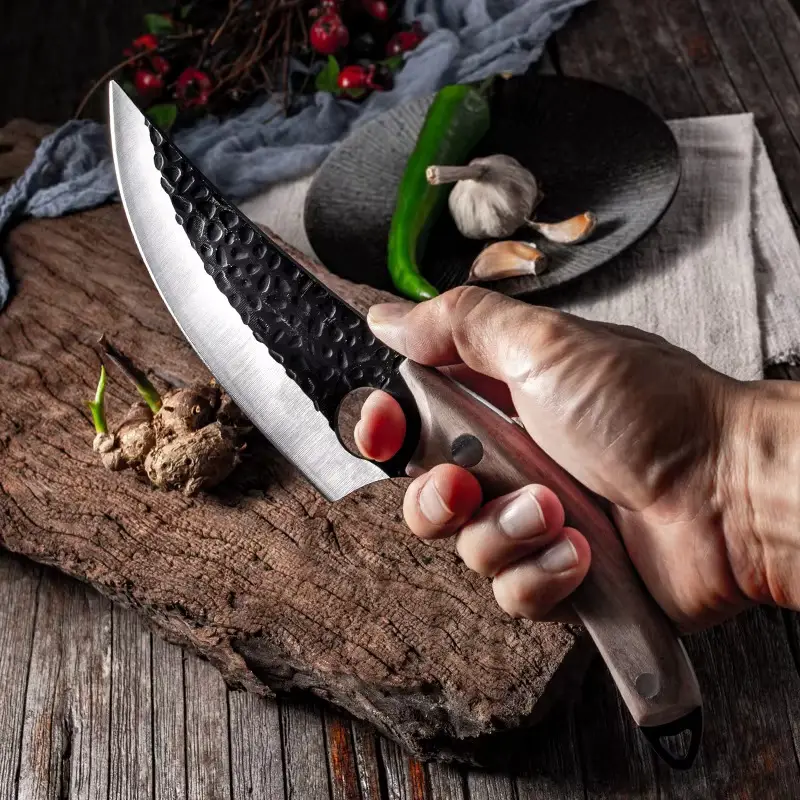There’s something truly magical about a pot roast simmering away in the kitchen, filling the house with an irresistible aroma that promises a hearty and comforting meal. This Southern Braised Pot Roast recipe, adapted from Lauren LeBlanc’s masterful creation, has become a family favorite in my home. The first time I made it, the tender, fall-apart beef and rich gravy were an instant hit. Even my pickiest eaters devoured every last bite, and the leftovers (if there are any!) are just as delicious the next day. This isn’t just a meal; it’s an experience, a warm hug on a plate, and a testament to the simple pleasures of slow-cooked, flavorful food. Get ready to discover your new go-to pot roast recipe – one that’s guaranteed to impress and satisfy.
Ingredients
The beauty of this Southern Braised Pot Roast lies in the quality and simplicity of its ingredients. Each component plays a vital role in creating the depth of flavor and tender texture that makes this dish so exceptional. Let’s delve into each ingredient and understand its contribution to the final masterpiece:
- 3-4 Pound Chuck Roast: The star of the show! Chuck roast is the ideal cut of beef for pot roast due to its rich marbling and connective tissue. These elements break down during the long braising process, resulting in incredibly tender and flavorful meat.
- Choosing Your Chuck Roast: Look for a roast that is well-marbled with streaks of white fat throughout the red meat. This marbling is crucial for flavor and moisture. A thicker roast will also braise more evenly and prevent drying out.
- Trimming Excess Fat: While marbling is desired, large chunks of hard fat on the exterior of the roast should be trimmed. This will prevent the final dish from being overly greasy and ensure a cleaner flavor.
- Cutting into Chunks (Optional): For faster cooking and even more tender results, you can cut the chuck roast into larger 2-3 inch chunks. This increases the surface area for searing and allows the braising liquid to penetrate more effectively. However, leaving it whole also works beautifully, especially if you prefer larger, shreddable pieces of beef.
- 1-2 Tablespoons Avocado Oil (Substitute for Olive Oil): Avocado oil is recommended for searing due to its high smoke point. This means it can withstand high heat without breaking down and producing harmful compounds. It also has a neutral flavor that won’t interfere with the taste of the pot roast.
- Olive Oil as a Substitute: If you don’t have avocado oil, olive oil is a perfectly acceptable substitute. Choose a good quality olive oil and be mindful of the heat. Avoid letting it smoke excessively, as this can impart a bitter flavor.
- Other Oil Options: Other high smoke point oils suitable for searing include canola oil, vegetable oil, or grapeseed oil.
- 2-3 Yellow Onions (Sliced into Half Rings): Onions form the flavorful base of the braising liquid and contribute sweetness and depth to the dish. Yellow onions are a classic choice for pot roast due to their balanced flavor that becomes sweeter as they cook.
- Slicing Technique: Slicing the onions into half rings allows them to soften and caramelize beautifully during the sautéing process, releasing their natural sugars and aromas.
- Onion Variations: While yellow onions are traditional, you can experiment with other types of onions. Sweet onions like Vidalia onions will add extra sweetness. Red onions can add a slightly sharper flavor, but they are less traditional for pot roast.
- 6-8 Cloves Garlic (Minced): Garlic is a powerhouse of flavor and adds a pungent aroma and savory depth to the pot roast. Freshly minced garlic is always preferred for its vibrant flavor.
- Mincing Garlic: Mincing garlic releases its aromatic oils and ensures it infuses the dish with its flavor evenly. You can use a garlic press, finely chop it with a knife, or use pre-minced garlic for convenience.
- Garlic Variations: For a milder garlic flavor, you can use roasted garlic instead of fresh. Roasted garlic has a sweeter, mellower taste that can add a different dimension to the pot roast.
- 4 Cups Beef Broth: Beef broth is the primary braising liquid, providing moisture and rich beefy flavor to the roast as it cooks. Choose a good quality beef broth or beef stock for the best results.
- Broth vs. Stock: While often used interchangeably, beef stock is generally richer and more flavorful than beef broth. If you can find beef stock, it will enhance the depth of flavor in your pot roast.
- Low Sodium Options: If you are watching your sodium intake, use low sodium beef broth and adjust the salt seasoning accordingly.
- Homemade Beef Broth: For the ultimate flavor experience, consider making your own beef broth. It takes time but the results are truly exceptional.
- 2-3 Tablespoons All-Purpose Flour: Flour is used to thicken the braising liquid at the end of cooking, creating a rich and savory gravy. All-purpose flour is readily available and works effectively for thickening.
- Alternative Thickeners: If you are gluten-free, you can use alternative thickeners like cornstarch, arrowroot powder, or tapioca starch. These should be mixed with cold water to create a slurry before adding to the braising liquid.
- Roux Option (More Advanced): For an even richer gravy, you can make a roux by cooking equal parts butter and flour before adding the braising liquid. This adds a nutty, complex flavor to the gravy.
- Fresh Herbs (like Parsley, Thyme, or Rosemary, Optional): Fresh herbs add a layer of aromatic complexity and freshness to the pot roast. Parsley, thyme, and rosemary are classic choices that complement the beef and savory flavors beautifully.
- Herb Variations: Feel free to experiment with other herbs like bay leaves, oregano, or sage. Bay leaves are often added to braising liquids for their subtle, earthy aroma.
- Dried Herbs (Substitute): If fresh herbs are not available, you can use dried herbs. Use about 1 teaspoon of dried herbs for every tablespoon of fresh herbs. Add dried herbs earlier in the cooking process to allow their flavors to fully develop.
- Herb Bundles (Bouquet Garni): To easily remove herbs before serving, tie them together in a bundle with kitchen twine, creating a bouquet garni.
- Salt and Pepper to Taste: Salt and pepper are essential seasonings that enhance all the other flavors in the pot roast. Season generously at each stage of the cooking process.
- Types of Salt: Kosher salt is often preferred by chefs for its larger crystals and clean taste. Sea salt and table salt are also acceptable.
- Freshly Ground Pepper: Freshly ground black pepper has a more robust and aromatic flavor than pre-ground pepper.
- Seasoning Stages: Season the beef generously with salt and pepper before searing. Taste and adjust seasoning throughout the cooking process, especially when making the gravy.
- Rice for Serving (Optional): Rice is a classic and versatile side dish that perfectly complements the rich gravy and tender beef of pot roast. White rice, brown rice, or even creamy mashed potatoes are excellent choices.
- Rice Variations: Consider serving pot roast over other grains like quinoa, couscous, or polenta.
- Other Side Dish Options: Explore other side dish options like roasted root vegetables, creamy polenta, or crusty bread for soaking up the delicious gravy.
Instructions
This Southern Braised Pot Roast recipe is surprisingly straightforward, but it requires patience and attention to detail to achieve that melt-in-your-mouth tenderness and deeply savory flavor. Let’s break down each step to guide you through the process:
PREP: The Foundation for Flavor (20-30 minutes)
- Resting the Roast: About 30 minutes prior to cooking, remove the chuck roast from the refrigerator and let it sit at room temperature. This crucial step allows the roast to warm up slightly, resulting in more even cooking and a juicier final product. Bringing the meat closer to room temperature before cooking helps it sear more effectively and prevents the center from being cold while the outside is cooked.
- Trimming and Portioning (Optional): Inspect your chuck roast and trim off any large, hard pieces of fat. While some marbling is desired for flavor, excessive fat can make the dish greasy. If desired, cut the chuck roast into more manageable 2-3 inch chunks. This is optional but can speed up the cooking process and create even more tender, fall-apart pieces.
- Generous Seasoning: Season the roast generously on all sides with salt and pepper. Don’t be shy with the seasoning! Salt is essential for drawing out moisture and enhancing the natural flavors of the beef. Pepper adds a touch of spice and complexity. Ensure you season every surface of the roast for maximum flavor penetration.
- Prepping Aromatics: Slice the yellow onions into half rings. Mince the garlic cloves finely. Having these aromatics prepped and ready to go will streamline the cooking process once you start searing the beef.
- Heating the Pot: Place a large pot or Dutch oven over medium-high heat. A Dutch oven is ideal for pot roast because its heavy bottom and tight-fitting lid ensure even heat distribution and excellent braising. Allow the pot to heat up fully before adding the oil. You’ll know it’s ready when a drop of water flicked into the pot evaporates quickly.
SEAR: Building a Crust of Flavor (10-15 minutes)
- Adding Oil: Add avocado oil (or your chosen oil) to the heated pot and swirl to coat the bottom evenly. The oil should shimmer slightly when it’s hot enough for searing.
- Searing the Beef: Carefully place the seasoned beef into the hot pot. Ensure there is enough space between the pieces if you’ve cut the roast into chunks, or if searing a whole roast, make sure it fits comfortably in the pot without overcrowding. The key to searing is to resist the urge to move the beef immediately. Allow it to sear undisturbed for about 5 minutes per side. This allows a beautiful brown crust to form, which is crucial for developing deep, rich flavor.
- Developing the Fond: As the beef sears, browned bits will start to form on the bottom of the pot. This is called “fond” and it’s packed with flavor. Don’t worry if it sticks a little – we’ll deglaze it later! Continue searing each side of the beef for about 5 minutes, or until a deep brown crust has formed on all sides. Use tongs to flip the roast or individual pieces.
- Removing the Beef: Once the beef is beautifully browned on all sides, remove it from the pot and set it aside. Try to keep as much of the flavorful fond in the pot as possible.
SAUTÉ: Layering in Aromatics (10-12 minutes)
- Sautéing Onions: Add the sliced onions to the pot and sauté over medium heat for about 8-10 minutes, or until they become translucent and softened. Stir occasionally to prevent sticking and ensure even cooking. As the onions cook, they will release their natural sugars and become sweeter.
- Deglazing the Pot: As you sauté the onions, use a wooden spoon or spatula to scrape the bottom of the pot and incorporate the flavorful fond (those browned bits) into the onions. This process is called deglazing and it’s essential for unlocking the full depth of flavor from the searing process.
- Adding Garlic: Once the onions are translucent, add the minced garlic to the pot and stir until fragrant, about 1 minute. Garlic cooks quickly, so be careful not to burn it. Stir constantly to prevent burning and ensure even cooking. The aroma of garlic at this stage is incredibly enticing!
SIMMER: The Magic of Braising (3-4 Hours)
- Returning the Beef: Place the browned roast back into the pot on top of the sautéed onions and garlic. You can arrange some of the onions on top of the beef if desired.
- Adding Braising Liquid: Pour in the beef broth, ensuring it comes up about halfway to two-thirds of the way up the sides of the roast. You want enough liquid to braise the meat but not so much that it’s completely submerged.
- Adding Herbs (Optional): If using fresh herbs, add them to the pot now. You can tie them together with kitchen twine for easy removal later, or simply toss them in.
- Bringing to a Simmer: Bring the liquid to a boil over medium-high heat. Once boiling, reduce the heat to low to maintain a gentle simmer. The liquid should be barely bubbling.
- Cover and Braise: Cover the pot tightly with a lid and simmer for 3-4 hours, or until the roast is fall-apart tender when pierced with a fork. The exact cooking time will depend on the size and thickness of your roast and the heat of your simmer.
- Checking Liquid Levels: Check the pot roast occasionally during the braising process to ensure the liquid has not gotten too low. If it has, add a splash of water or beef broth to maintain a sufficient braising liquid. If there is still too much liquid at the end of the braising time, you can simmer uncovered for a few minutes to reduce it slightly.
GRAVY: Transforming Braising Liquid into Deliciousness (15-20 minutes)
- Removing Broth: Once the roast is tender, carefully remove about 1 cup of the hot braising broth from the pot and transfer it to a separate cup or bowl.
- Creating a Slurry: Whisk in 2-3 tablespoons of all-purpose flour into the removed broth. Stir vigorously until all lumps are completely gone, creating a smooth slurry. This step is crucial to prevent lumps in your gravy.
- Adding Slurry to Pot: Gradually pour the flour and broth mixture back into the pot with the pot roast, stirring well to incorporate it into the remaining braising liquid. Start with a little slurry at a time and add more if needed to reach your desired gravy thickness.
- Simmering Gravy: Increase the heat slightly to medium-low and simmer for 10-15 minutes more, stirring occasionally, until the gravy thickens to your desired consistency. The flour needs to cook through to eliminate any raw flour taste and properly thicken the gravy.
- Seasoning Gravy: Taste the gravy and add salt and black pepper to taste. Adjust seasoning as needed to achieve the perfect flavor balance.
SERVE: The Grand Finale (5-10 minutes)
- Removing Herbs: If you used fresh herb stems, remove them from the pot before serving.
- Shredding or Chunking Beef: Shred the beef into smaller, tender pieces using two forks, or cut it into large, satisfying chunks for serving, depending on your preference.
- Serving Suggestions: Serve the Southern Braised Pot Roast hot over rice, creamy mashed potatoes, or your favorite side dish. Ladle generous amounts of the rich gravy over the beef and sides.
- Garnishing: Top with fresh herbs like chopped parsley for a pop of freshness and visual appeal.
Nutrition Facts
Serving Size: 1 serving
Calories: 358 kcal
Please note that nutritional values are estimates and can vary based on specific ingredients used and portion sizes.
This Southern Braised Pot Roast is not only delicious but also provides a good source of protein from the beef. It also contains carbohydrates from the onions and potential side dishes like rice or potatoes. While it contains calories and fat, it can be part of a balanced diet when enjoyed in moderation and paired with healthy sides like vegetables.
Preparation Time
Prep Time: 20 minutes
Cook Time: 4 hours
Total Time: 4 hours 20 minutes
This recipe requires a bit of time, primarily for the slow braising process, but the hands-on prep time is minimal. The long cook time is what creates the incredible tenderness and flavor that makes this pot roast so exceptional. It’s perfect for a weekend meal when you have time to let it simmer and fill your home with its comforting aroma.
How to Serve
Southern Braised Pot Roast is a versatile dish that can be served in various ways, making it perfect for family dinners, potlucks, or even a special occasion. Here are some serving suggestions to elevate your pot roast experience:
- Classic Rice Bowl: Serve the shredded or chunked pot roast over a bed of fluffy white rice or nutritious brown rice. The rice soaks up the delicious gravy beautifully, creating a comforting and satisfying meal.
- Creamy Mashed Potatoes: Pair the pot roast with a generous scoop of creamy mashed potatoes. The richness of the potatoes complements the savory beef and gravy perfectly, creating a truly indulgent combination.
- Crusty Bread for Sopping: Serve alongside slices of crusty bread, such as sourdough or baguette. The bread is ideal for soaking up every last drop of the flavorful gravy, ensuring nothing goes to waste.
- Roasted Root Vegetables: For a more balanced and nutritious meal, serve pot roast with roasted root vegetables like carrots, potatoes, parsnips, and sweet potatoes. The sweetness of the roasted vegetables provides a delightful contrast to the savory beef.
- Polenta or Grits: For a Southern twist, serve pot roast over creamy polenta or cheesy grits. These comforting grains provide a smooth and flavorful base for the tender beef and rich gravy.
- Side Salad for Freshness: Balance the richness of the pot roast with a fresh side salad dressed with a light vinaigrette. The salad adds a refreshing element and cuts through the richness of the meal.
- Garnishes: Enhance the presentation and flavor with garnishes like:
- Freshly chopped parsley or chives sprinkled over the top.
- A dollop of sour cream or Greek yogurt for added creaminess.
- Pickled onions or giardiniera for a tangy contrast.
- A sprinkle of red pepper flakes for a touch of heat (optional).
Additional Tips for the Perfect Pot Roast
To ensure your Southern Braised Pot Roast is a resounding success, here are five additional tips to keep in mind:
- Don’t Skip the Sear: Searing the beef is not just about aesthetics; it’s crucial for developing deep, rich flavor. The Maillard reaction, which occurs during searing, creates complex flavor compounds that enhance the overall taste of the pot roast. Don’t rush this step – allow the beef to brown properly on all sides.
- Use Quality Beef Broth or Stock: The braising liquid is a key component of pot roast, and using high-quality beef broth or stock will significantly impact the flavor. Opt for low-sodium options to control the saltiness and consider homemade beef stock for the ultimate flavor boost.
- Low and Slow is Key: Braising is a slow cooking method, and patience is your best friend. Cooking the pot roast at a low simmer for a long time allows the connective tissue in the chuck roast to break down, resulting in incredibly tender and fall-apart meat. Resist the urge to rush the cooking process.
- Add Vegetables Strategically: If you want to add vegetables like carrots, potatoes, or mushrooms, add them during the last 30-45 minutes of cooking. Adding them too early can result in mushy vegetables. Harder vegetables like potatoes and carrots can be added slightly earlier than softer vegetables like mushrooms.
- Rest Before Shredding: Once the pot roast is cooked, allow it to rest in the braising liquid for about 10-15 minutes before shredding or slicing. This allows the juices to redistribute throughout the meat, resulting in a more tender and flavorful final product.
FAQ About Southern Braised Pot Roast
Q1: Can I make pot roast in a slow cooker?
A: Yes, absolutely! Slow cookers are perfect for pot roast. Follow the searing and sautéing steps in a skillet or Dutch oven on the stovetop, then transfer everything to your slow cooker. Cook on low for 6-8 hours or on high for 3-4 hours, or until the beef is fall-apart tender. Thicken the gravy on the stovetop after slow cooking for the best results.
Q2: What if I don’t have a Dutch oven? Can I use another pot?
A: While a Dutch oven is ideal, you can use any large, heavy-bottomed pot with a tight-fitting lid. A large stockpot or oven-safe pot will work. The key is to have a pot that can retain heat evenly and has a lid to trap moisture during braising.
Q3: Can I use wine in the braising liquid?
A: Yes, red wine can add depth and complexity to the braising liquid. You can substitute 1 cup of beef broth with 1 cup of dry red wine like Cabernet Sauvignon or Merlot. Add the wine after sautéing the onions and garlic and let it reduce slightly before adding the beef broth.
Q4: How do I prevent my gravy from being lumpy?
A: The key to lump-free gravy is to create a smooth slurry by whisking the flour with cold or room temperature broth before adding it to the hot braising liquid. Ensure the slurry is completely smooth before pouring it into the pot and stir constantly as you add it. Simmering the gravy for long enough also helps eliminate any flour lumps and raw flour taste.
Q5: Can I freeze leftover pot roast?
A: Yes, pot roast freezes beautifully! Allow the pot roast to cool completely, then transfer it to freezer-safe containers or freezer bags. For easier storage, consider freezing it flat in freezer bags. Label and date the containers and freeze for up to 6 months. Thaw overnight in the refrigerator or in a bowl of cool water before reheating. Reheat gently in the microwave or on the stovetop until heated through.
Print
Southern Braised Pot Roast Recipe
Ingredients
- 3-4 Pound Chuck Roast: The star of the show! Chuck roast is the ideal cut of beef for pot roast due to its rich marbling and connective tissue. These elements break down during the long braising process, resulting in incredibly tender and flavorful meat.
- Choosing Your Chuck Roast: Look for a roast that is well-marbled with streaks of white fat throughout the red meat. This marbling is crucial for flavor and moisture. A thicker roast will also braise more evenly and prevent drying out.
- Trimming Excess Fat: While marbling is desired, large chunks of hard fat on the exterior of the roast should be trimmed. This will prevent the final dish from being overly greasy and ensure a cleaner flavor.
- Cutting into Chunks (Optional): For faster cooking and even more tender results, you can cut the chuck roast into larger 2-3 inch chunks. This increases the surface area for searing and allows the braising liquid to penetrate more effectively. However, leaving it whole also works beautifully, especially if you prefer larger, shreddable pieces of beef.
- 1-2 Tablespoons Avocado Oil (Substitute for Olive Oil): Avocado oil is recommended for searing due to its high smoke point. This means it can withstand high heat without breaking down and producing harmful compounds. It also has a neutral flavor that won’t interfere with the taste of the pot roast.
- Olive Oil as a Substitute: If you don’t have avocado oil, olive oil is a perfectly acceptable substitute. Choose a good quality olive oil and be mindful of the heat. Avoid letting it smoke excessively, as this can impart a bitter flavor.
- Other Oil Options: Other high smoke point oils suitable for searing include canola oil, vegetable oil, or grapeseed oil.
- 2-3 Yellow Onions (Sliced into Half Rings): Onions form the flavorful base of the braising liquid and contribute sweetness and depth to the dish. Yellow onions are a classic choice for pot roast due to their balanced flavor that becomes sweeter as they cook.
- Slicing Technique: Slicing the onions into half rings allows them to soften and caramelize beautifully during the sautéing process, releasing their natural sugars and aromas.
- Onion Variations: While yellow onions are traditional, you can experiment with other types of onions. Sweet onions like Vidalia onions will add extra sweetness. Red onions can add a slightly sharper flavor, but they are less traditional for pot roast.
- 6-8 Cloves Garlic (Minced): Garlic is a powerhouse of flavor and adds a pungent aroma and savory depth to the pot roast. Freshly minced garlic is always preferred for its vibrant flavor.
- Mincing Garlic: Mincing garlic releases its aromatic oils and ensures it infuses the dish with its flavor evenly. You can use a garlic press, finely chop it with a knife, or use pre-minced garlic for convenience.
- Garlic Variations: For a milder garlic flavor, you can use roasted garlic instead of fresh. Roasted garlic has a sweeter, mellower taste that can add a different dimension to the pot roast.
- 4 Cups Beef Broth: Beef broth is the primary braising liquid, providing moisture and rich beefy flavor to the roast as it cooks. Choose a good quality beef broth or beef stock for the best results.
- Broth vs. Stock: While often used interchangeably, beef stock is generally richer and more flavorful than beef broth. If you can find beef stock, it will enhance the depth of flavor in your pot roast.
- Low Sodium Options: If you are watching your sodium intake, use low sodium beef broth and adjust the salt seasoning accordingly.
- Homemade Beef Broth: For the ultimate flavor experience, consider making your own beef broth. It takes time but the results are truly exceptional.
- 2-3 Tablespoons All-Purpose Flour: Flour is used to thicken the braising liquid at the end of cooking, creating a rich and savory gravy. All-purpose flour is readily available and works effectively for thickening.
- Alternative Thickeners: If you are gluten-free, you can use alternative thickeners like cornstarch, arrowroot powder, or tapioca starch. These should be mixed with cold water to create a slurry before adding to the braising liquid.
- Roux Option (More Advanced): For an even richer gravy, you can make a roux by cooking equal parts butter and flour before adding the braising liquid. This adds a nutty, complex flavor to the gravy.
- Fresh Herbs (like Parsley, Thyme, or Rosemary, Optional): Fresh herbs add a layer of aromatic complexity and freshness to the pot roast. Parsley, thyme, and rosemary are classic choices that complement the beef and savory flavors beautifully.
- Herb Variations: Feel free to experiment with other herbs like bay leaves, oregano, or sage. Bay leaves are often added to braising liquids for their subtle, earthy aroma.
- Dried Herbs (Substitute): If fresh herbs are not available, you can use dried herbs. Use about 1 teaspoon of dried herbs for every tablespoon of fresh herbs. Add dried herbs earlier in the cooking process to allow their flavors to fully develop.
- Herb Bundles (Bouquet Garni): To easily remove herbs before serving, tie them together in a bundle with kitchen twine, creating a bouquet garni.
- Salt and Pepper to Taste: Salt and pepper are essential seasonings that enhance all the other flavors in the pot roast. Season generously at each stage of the cooking process.
- Types of Salt: Kosher salt is often preferred by chefs for its larger crystals and clean taste. Sea salt and table salt are also acceptable.
- Freshly Ground Pepper: Freshly ground black pepper has a more robust and aromatic flavor than pre-ground pepper.
- Seasoning Stages: Season the beef generously with salt and pepper before searing. Taste and adjust seasoning throughout the cooking process, especially when making the gravy.
- Rice for Serving (Optional): Rice is a classic and versatile side dish that perfectly complements the rich gravy and tender beef of pot roast. White rice, brown rice, or even creamy mashed potatoes are excellent choices.
- Rice Variations: Consider serving pot roast over other grains like quinoa, couscous, or polenta.
- Other Side Dish Options: Explore other side dish options like roasted root vegetables, creamy polenta, or crusty bread for soaking up the delicious gravy.
Instructions
- Resting the Roast: About 30 minutes prior to cooking, remove the chuck roast from the refrigerator and let it sit at room temperature. This crucial step allows the roast to warm up slightly, resulting in more even cooking and a juicier final product. Bringing the meat closer to room temperature before cooking helps it sear more effectively and prevents the center from being cold while the outside is cooked.
- Trimming and Portioning (Optional): Inspect your chuck roast and trim off any large, hard pieces of fat. While some marbling is desired for flavor, excessive fat can make the dish greasy. If desired, cut the chuck roast into more manageable 2-3 inch chunks. This is optional but can speed up the cooking process and create even more tender, fall-apart pieces.
- Generous Seasoning: Season the roast generously on all sides with salt and pepper. Don’t be shy with the seasoning! Salt is essential for drawing out moisture and enhancing the natural flavors of the beef. Pepper adds a touch of spice and complexity. Ensure you season every surface of the roast for maximum flavor penetration.
- Prepping Aromatics: Slice the yellow onions into half rings. Mince the garlic cloves finely. Having these aromatics prepped and ready to go will streamline the cooking process once you start searing the beef.
- Heating the Pot: Place a large pot or Dutch oven over medium-high heat. A Dutch oven is ideal for pot roast because its heavy bottom and tight-fitting lid ensure even heat distribution and excellent braising. Allow the pot to heat up fully before adding the oil. You’ll know it’s ready when a drop of water flicked into the pot evaporates quickly.
SEAR: Building a Crust of Flavor (10-15 minutes)
- Adding Oil: Add avocado oil (or your chosen oil) to the heated pot and swirl to coat the bottom evenly. The oil should shimmer slightly when it’s hot enough for searing.
- Searing the Beef: Carefully place the seasoned beef into the hot pot. Ensure there is enough space between the pieces if you’ve cut the roast into chunks, or if searing a whole roast, make sure it fits comfortably in the pot without overcrowding. The key to searing is to resist the urge to move the beef immediately. Allow it to sear undisturbed for about 5 minutes per side. This allows a beautiful brown crust to form, which is crucial for developing deep, rich flavor.
- Developing the Fond: As the beef sears, browned bits will start to form on the bottom of the pot. This is called “fond” and it’s packed with flavor. Don’t worry if it sticks a little – we’ll deglaze it later! Continue searing each side of the beef for about 5 minutes, or until a deep brown crust has formed on all sides. Use tongs to flip the roast or individual pieces.
- Removing the Beef: Once the beef is beautifully browned on all sides, remove it from the pot and set it aside. Try to keep as much of the flavorful fond in the pot as possible.
SAUTÉ: Layering in Aromatics (10-12 minutes)
- Sautéing Onions: Add the sliced onions to the pot and sauté over medium heat for about 8-10 minutes, or until they become translucent and softened. Stir occasionally to prevent sticking and ensure even cooking. As the onions cook, they will release their natural sugars and become sweeter.
- Deglazing the Pot: As you sauté the onions, use a wooden spoon or spatula to scrape the bottom of the pot and incorporate the flavorful fond (those browned bits) into the onions. This process is called deglazing and it’s essential for unlocking the full depth of flavor from the searing process.
- Adding Garlic: Once the onions are translucent, add the minced garlic to the pot and stir until fragrant, about 1 minute. Garlic cooks quickly, so be careful not to burn it. Stir constantly to prevent burning and ensure even cooking. The aroma of garlic at this stage is incredibly enticing!
SIMMER: The Magic of Braising (3-4 Hours)
- Returning the Beef: Place the browned roast back into the pot on top of the sautéed onions and garlic. You can arrange some of the onions on top of the beef if desired.
- Adding Braising Liquid: Pour in the beef broth, ensuring it comes up about halfway to two-thirds of the way up the sides of the roast. You want enough liquid to braise the meat but not so much that it’s completely submerged.
- Adding Herbs (Optional): If using fresh herbs, add them to the pot now. You can tie them together with kitchen twine for easy removal later, or simply toss them in.
- Bringing to a Simmer: Bring the liquid to a boil over medium-high heat. Once boiling, reduce the heat to low to maintain a gentle simmer. The liquid should be barely bubbling.
- Cover and Braise: Cover the pot tightly with a lid and simmer for 3-4 hours, or until the roast is fall-apart tender when pierced with a fork. The exact cooking time will depend on the size and thickness of your roast and the heat of your simmer.
- Checking Liquid Levels: Check the pot roast occasionally during the braising process to ensure the liquid has not gotten too low. If it has, add a splash of water or beef broth to maintain a sufficient braising liquid. If there is still too much liquid at the end of the braising time, you can simmer uncovered for a few minutes to reduce it slightly.
GRAVY: Transforming Braising Liquid into Deliciousness (15-20 minutes)
- Removing Broth: Once the roast is tender, carefully remove about 1 cup of the hot braising broth from the pot and transfer it to a separate cup or bowl.
- Creating a Slurry: Whisk in 2-3 tablespoons of all-purpose flour into the removed broth. Stir vigorously until all lumps are completely gone, creating a smooth slurry. This step is crucial to prevent lumps in your gravy.
- Adding Slurry to Pot: Gradually pour the flour and broth mixture back into the pot with the pot roast, stirring well to incorporate it into the remaining braising liquid. Start with a little slurry at a time and add more if needed to reach your desired gravy thickness.
- Simmering Gravy: Increase the heat slightly to medium-low and simmer for 10-15 minutes more, stirring occasionally, until the gravy thickens to your desired consistency. The flour needs to cook through to eliminate any raw flour taste and properly thicken the gravy.
- Seasoning Gravy: Taste the gravy and add salt and black pepper to taste. Adjust seasoning as needed to achieve the perfect flavor balance.
SERVE: The Grand Finale (5-10 minutes)
- Removing Herbs: If you used fresh herb stems, remove them from the pot before serving.
- Shredding or Chunking Beef: Shred the beef into smaller, tender pieces using two forks, or cut it into large, satisfying chunks for serving, depending on your preference.
- Serving Suggestions: Serve the Southern Braised Pot Roast hot over rice, creamy mashed potatoes, or your favorite side dish. Ladle generous amounts of the rich gravy over the beef and sides.
- Garnishing: Top with fresh herbs like chopped parsley for a pop of freshness and visual appeal.
Nutrition
- Serving Size: One Normal Portion
- Calories: 358 kcal






